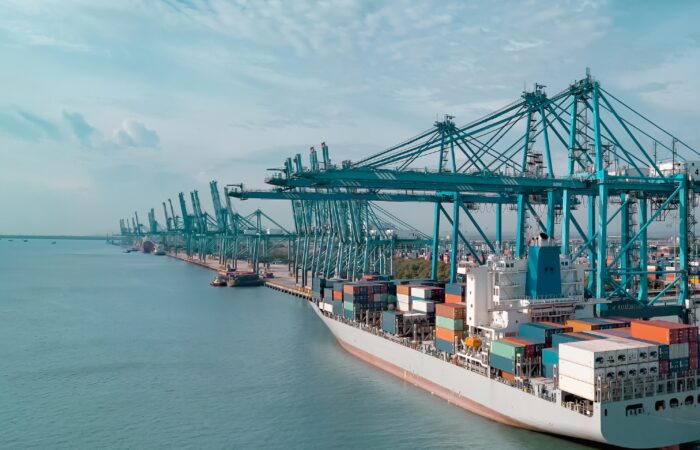
Asset Monitoring
What is Asset Monitoring?
Asset monitoring is real-time, continuous tracking of assets, such as vehicles, equipment, and other high-value items. Typical asset monitoring systems use data from global navigation satellite systems (GNSS), internet of things (IoT) sensors, artificial intelligence (AI) systems, and other data sources to detect and monitor an asset’s location, status, and performance.
What is Asset Monitoring in the Context of Shipping Security?
In the world of shipping security, asset monitoring focuses on the behavior of owned vessels, chartered vessels, vessels carrying cargo, and competitors’ vessels. Using asset monitoring tools, stakeholders can track a vessel’s movements and activities, as well as the cargo onboard if relevant, allowing them to measure risk.
Shipping companies and security teams can leverage the data provided by asset monitoring tools to maintain situational awareness and detect deceptive shipping practices. As a result, they are positioned to implement contingency plans when issues or risk levels rise above their comfort zone.

What Information Does Asset Monitoring Provide to Security Teams?
Security teams are focused on four primary questions relating to their ships and cargo:
- Where is my vessel or cargo at any given time?
- Is the vessel or cargo passing through a dangerous area?
- Are my competitors traversing through a dangerous area?
- Are extreme weather events/conditions expected?
Asset monitoring solutions combine multiple data sources to help answer those questions. Stakeholders can check on location data at any time during the ship’s journey. Data fed into the AI engine informs users of risks in a specific area, which may stem from inclement weather, political instability, piracy, or a myriad of other potential risks. Tracking and monitoring solutions can be used to monitor a company’s ships, or those of the competition, as location data for ships is publicly available.
What is Asset Monitoring’s Role Before a Ship Sets Sail?
Pre-chartering is the time period before a ship leaves the port. It is during this time that shippers decide which ship they should use to send cargo. Asset monitoring tools can provide invaluable information and risk assessments during this stage in shipping.
Using historical data and current events, asset monitoring tools can alert shippers as to whether a ship is likely to be attacked. For example, if a ship is approaching Yemen, it might predict that the ship is at risk of a Houthi attack.
Advanced asset monitoring tools can also review a ship’s ownership. It is able to determine whether a potential shipping partner has engaged in questionable activities, such as shady ownership changes, or flag hopping. They can also look into a ship’s travel history. Ships that have stopped in ports under sanctions, such as in Russia or Iran, would likely be considered high risk.
Shippers who identify ships with questionable histories may want to find a different shipping partner rather than risk legal issues, cargo hold-ups, and potential sanctions.
Which Technologies Are Used to Monitor Vessel Activities in Real Time?
Asset monitoring is built on a combination of technologies, each of which provides different data sets.
| Technology | Purpose |
| GNSS/GPS | Tracks the location and movement of vessels |
| AI | Analyzes patterns, detects anomalies, and predicts risks |
| IoT sensors | Collects real-time data on vessel conditions |
| Geofencing | Monitors entry into predefined high-risk zones |
| Satellite tracking | Provides global visibility, especially in remote areas |
| Machine learning | Identifies deceptive shipping practices |
Which Types of Risks Are Identified Through Asset Monitoring Solutions?
Asset monitoring solutions help security teams discover and avoid a number of risks, including:
- Deceptive shipping practices: uncovers suspicious activities, such as falsifying routes or destination information
- Environmental hazards: allows for quick responses to environmental risks
- Geopolitical instability: identifies changes in geopolitical landscapes that could affect maritime routes, or vessel safety
- Illegal activities: identifies potential illegal actions, such as smuggling or violations of sanctions, by tracking unusual patterns
- Mechanical failure risks: helps detect mechanical issues early
- Piracy and armed attacks: helps detect and respond to threats of piracy or armed assaults on vessels
- Regulatory non-compliance: ensures that vessels adhere to international regulations
- Sanctions violations: identifies potential violations of international sanctions
What Are Some Additional Asset Monitoring Use Cases?
Asset monitoring plays a critical role in safeguarding valuable resources, optimizing operations, and ensuring compliance with industry regulations. The following use cases show how some organizations benefit from asset monitoring solutions.
Fleet management: logistics and transportation companies use asset monitoring to enhance the efficiency and reliability of their fleet operations. Real-time tracking of a ship’s location, speed, and performance enables companies to optimize route planning to reduce fuel consumption, shorten delivery times, and improve customer satisfaction.
Asset monitoring also enables predictive maintenance by alerting fleet managers to potential mechanical issues before they result in costly breakdowns or delays. This minimizes downtime, while extending the lifespan of ships. Data collected from asset monitoring systems can also be analyzed to refine logistics strategies, identify trends, and reduce operational costs.
Regulatory compliance: the shipping industry is subject to strict regulations and sanctions imposed by governments and international bodies. Asset monitoring helps organizations stay compliant by tracking the movement and status of their vessels to ensure they are operating within legal boundaries.
Additionally, real-time monitoring provides the necessary documentation and transparency to meet environmental, safety, and ethical standards. By preventing non-compliance, businesses can avoid legal repercussions, financial penalties, and reputational damage.












